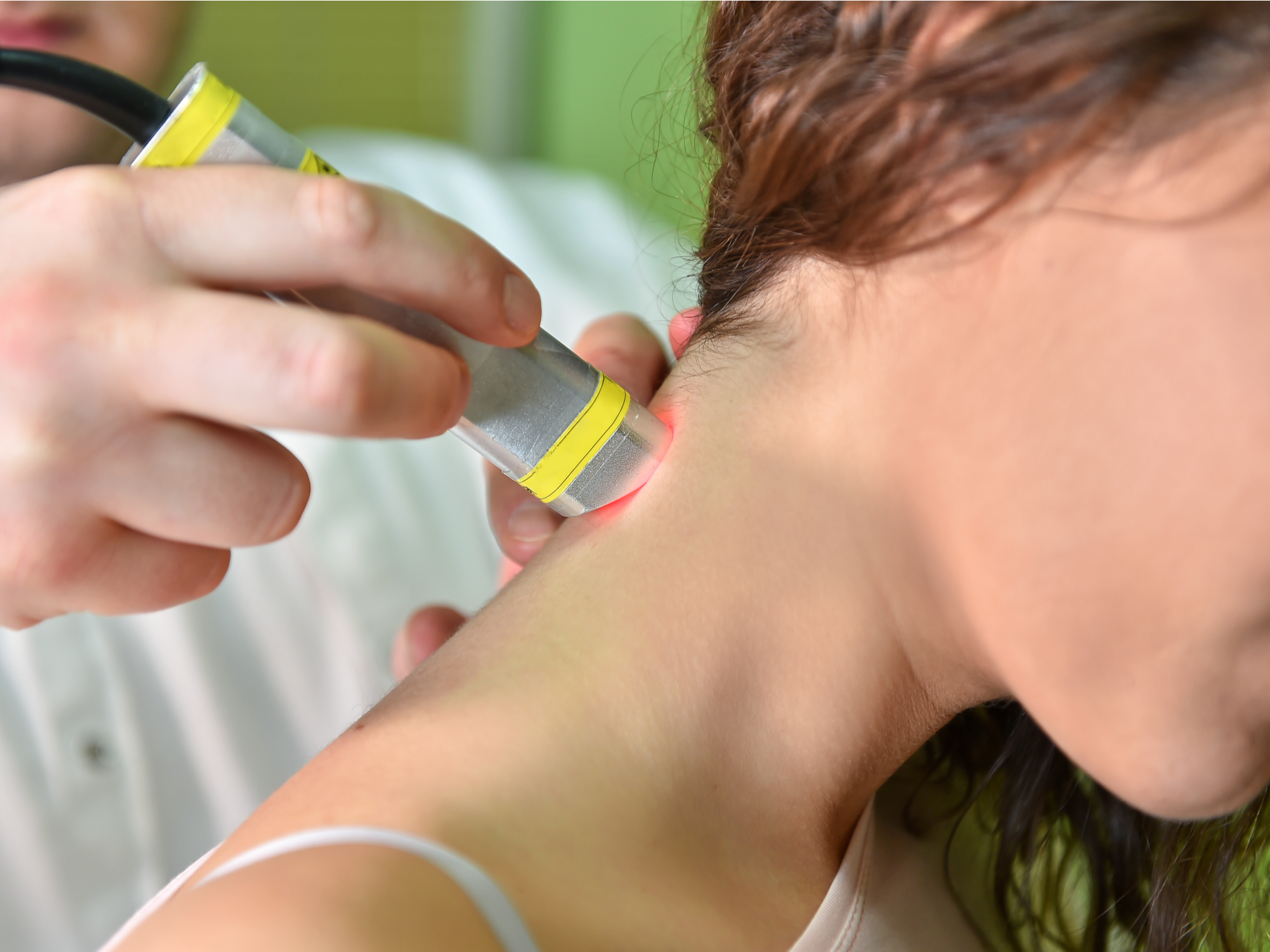
Low-level laser treatment is a form of therapy that involves a non-invasive laser comprising of a single wavelength of light. It has many names depending on the institution or location. Some are bio-stimulation, photobiology, cold laser therapy, and many more.
The purpose of this therapy is to treat many conditions. These conditions include acceleration of tissue and muscle repair, helping your injuries heal faster. It also helps in pain relief and inflammation.
How Low-level Therapy Works
Low-level therapy involves the use of different outputs and wavelengths of low-level light. The light is focused on the area that the treatment is required. Your body will absorb this light. The cells around the area with the injury respond physiologically, promoting regeneration.
Cells in the superficial area require wavelengths around 600 to 700 nanometers. For deeper cell regeneration, you will require wavelengths that are around 780 to 950 nanometers. This procedure is non-invasive and painless. All will feel is the touch of the laser device on your skin. The device emits no sound, vibration, or heat. A treatment session only lasts a few minutes.
Conditions Ideal for Low-level Laser Therapy
Although this form of therapy has been around for a while, there are very few studies about it. It helps in several ailments, but there is no proof that it is better than the alternatives. Some of the ailments that low-level therapy helps in include:
Hair loss – A recent study on women and men with androgenetic alopecia grew thicker hair after 24 weeks of low-level laser treatment.
Dementia – After 12 weeks of regular close infrared light treatment via the nose and on the head, there were visible changes in the people with dementia. The study found that their moods changed, they could sleep better, and had better memories.
Tendinitis – The procedure can reduce pain and inflammation in persons with Achilles tendinitis.
Dental pain.
Osteoarthritis.
Wrinkles – The procedure helps with wrinkles and smoothens your skin. It also helps deal with burns, acne scars, and UV damage on the skin.
Risks and Side Effects
Low-level laser treatment may have some side effects. Some of these include:
Acne – Avoid applying bandages or thick lotions to your face after the procedure. They may exacerbate the acne or cause the development of milia around the area.
Changes in skin tone – Low-level laser treatment can cause hyperpigmentation or hypopigmentation in the first few weeks of treatment.
Scarring.
Redness, itching, and swelling.
Ectropion – This is the turning of your eyelids.
Infections.
Can You Do It at Home?
There are many low-level laser devices available that are fit for home use. Despite their availability, you should be careful when purchasing one. This is because some may cause more harm than good.
Where Not to Apply Low-level Laser Therapy
Low-level laser therapy is not meant for all areas of your body. If you are using it at home, stay away from your thyroid gland and eyes. Also, do not use it in areas where you have a tattoo. This is because it interferes with tattoo ink.
For more information on low-level laser treatment, visit Dr. Dan Kirschner Chiropractic at our offices in Arcadia or Sarasota, Florida. You can also call (863) 494-7110 or (941) 330-8553 to schedule an appointment.






